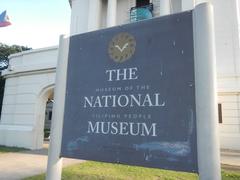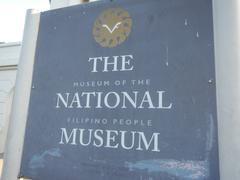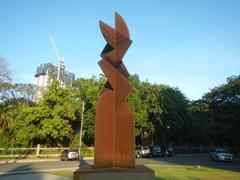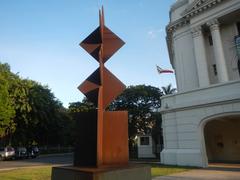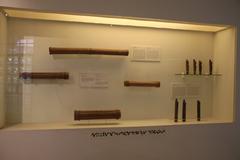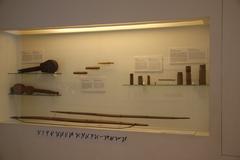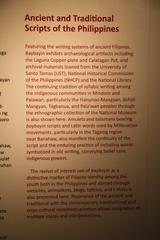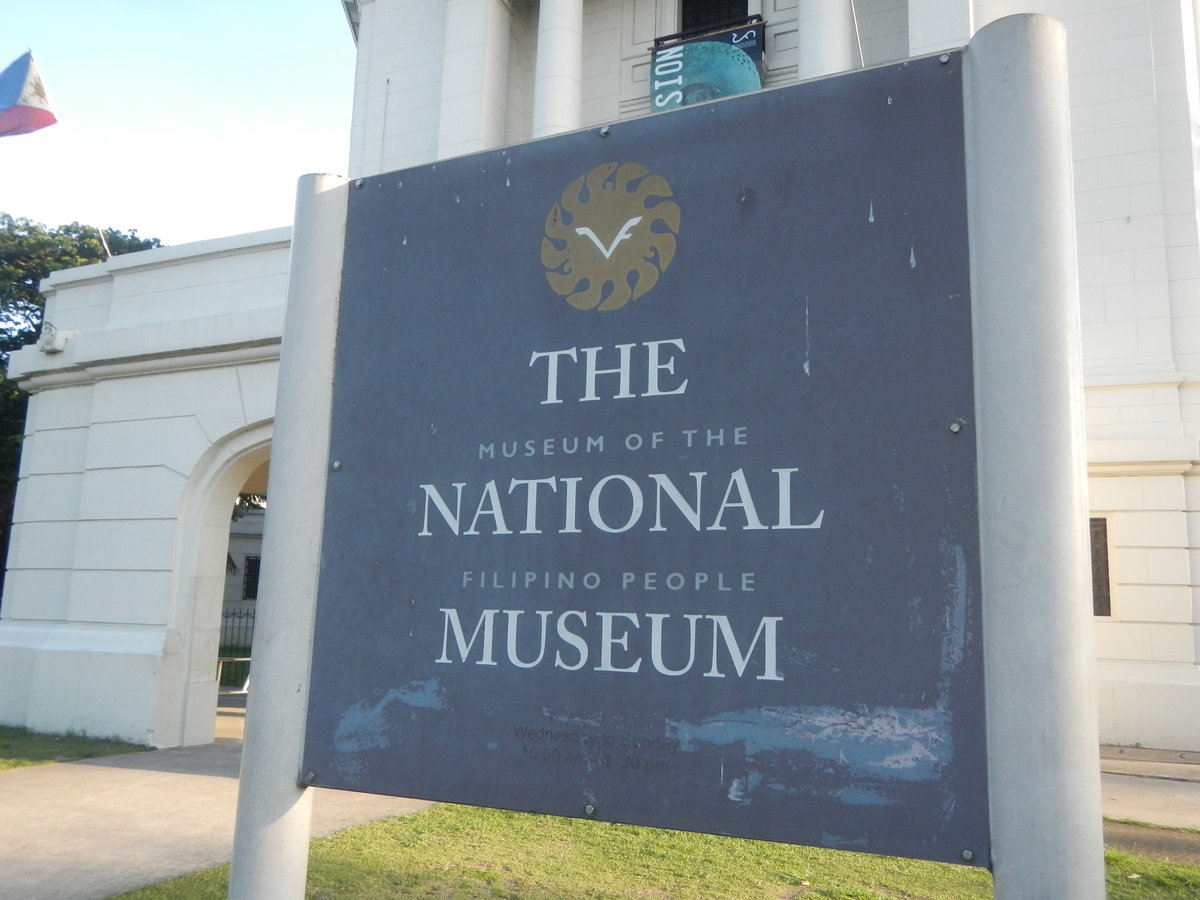
National Museum of Anthropology Metro Manila: Visiting Hours, Tickets, and Travel Guide
Date: 15/06/2025
Introduction
Nestled in the historic heart of Metro Manila, the National Museum of Anthropology stands as a premier institution dedicated to preserving and showcasing the Philippines’ rich ethnographic and archaeological heritage. Housed in the iconic neoclassical Old Finance Building along Padre Burgos Avenue in Rizal Park, this museum offers an immersive journey through the diverse cultures, traditions, and histories of the archipelago’s many ethnolinguistic groups. Since its inception in the late 19th century as the Museo-Biblioteca de Filipinas, the museum has evolved through colonial rule, war, and reconstruction, ultimately becoming a vital part of the National Museum Complex, alongside the National Museum of Fine Arts and the National Museum of Natural History (National Museum History).
The museum serves not only as a repository of invaluable artifacts—such as the prehistoric Manunggul Jar, San Diego shipwreck treasures, and indigenous textiles—but also as an active center for education, community engagement, and heritage preservation. Its galleries, including the Lumad Mindanao, Ifugao Bale, and Austronesian maritime exhibits, offer visitors a comprehensive exploration of Filipino identity. Modern amenities and accessibility features, coupled with its location in Manila’s cultural district, make the museum an essential stop for cultural exploration (Village Pipol; MB Lifestyle).
This guide provides practical information on visiting hours, ticketing, accessibility, special exhibitions, travel tips, and must-see exhibits, ensuring an enriching experience for all visitors. For up-to-date details and interactive resources, consult the National Museum website and consider the Audiala app for audio guides and educational content.
Table of Contents
- Introduction
- Museum History and Cultural Significance
- Architectural Highlights
- Visiting Hours and Admission
- Entry Guidelines and Accessibility
- Museum Layout and Must-See Exhibits
- Visitor Amenities and Tips
- Nearby Attractions and Itinerary Suggestions
- Frequently Asked Questions (FAQ)
- Summary and Final Recommendations
- References
Museum History and Cultural Significance
Founded by royal decree in 1887 and opened in 1891 as the Museo-Biblioteca de Filipinas, the institution evolved through various phases of Philippine history. Its collections survived wars and disasters, with massive postwar recovery efforts leading to its consolidation as part of the National Museum network (National Museum History). In 1998, Republic Act 8492 formalized the National Museum Complex, and the Anthropology museum found its permanent home in the Old Finance Building, a neoclassical structure strategically located at Rizal Park.
The museum plays a crucial role in safeguarding and interpreting artifacts that narrate the stories of the nation’s indigenous communities, pre-colonial history, and cultural evolution. It actively engages the public through lectures, special exhibitions, and educational programs, such as those highlighting indigenous weaving traditions (Senate Press Release).
Architectural Highlights
Designed by Ralph Harrington Doane during the American colonial era, the Old Finance Building epitomizes neoclassical architecture with its grand Corinthian columns, formal façade, and imposing stairway. The trapezium plan allows for spacious exhibition halls and intimate galleries, while the central atrium and courtyard enhance the museum’s airy, welcoming atmosphere. Restoration and modernization have equipped the building with climate control, security, and accessibility features without compromising its historical character.
Must-see architectural features:
- Grand façade with Corinthian columns
- Monumental stairway leading to the main entrance
- Central atrium with natural lighting and a life-size Ifugao house model
- Five floors of galleries with accessible corridors and elevators
Visiting Hours and Admission
- Operating Days: Tuesday to Sunday
- Hours: 9:00 AM to 6:00 PM (Check the official website for seasonal or holiday updates)
- Closed: Mondays and select holidays
Admission:
General admission is free for all visitors. Some special exhibitions or events may have separate fees (MB Lifestyle).
Booking:
Walk-in visitors are welcome, but groups of 20 or more should reserve in advance for guided tours or special arrangements. During peak periods, pre-registration is recommended.
Entry Guidelines and Accessibility
- Security: All visitors must undergo security screening; large bags, food, and drinks are not allowed inside galleries.
- Photography: Non-flash photography is permitted in most areas. Tripods, selfie sticks, and flash are prohibited.
- Health and Safety: Face masks may be required during public health alerts. Sanitizing stations are available.
- Accessibility: The museum is fully wheelchair accessible, with ramps, elevators, and accessible restrooms. Assistance is available upon request.
- Family-Friendly: Stroller access, interactive exhibits, and educational programs cater to families and school groups.
For a full list of visitor guidelines, refer to the official National Museum Visitor Guidelines PDF.
Museum Layout and Must-See Exhibits
The museum spans five floors, each dedicated to different aspects of Philippine ethnography and archaeology.
Key Galleries and Collections
-
Archaeological Treasures:
- Manunggul Jar: An iconic Neolithic burial jar from Palawan, symbolizing the ancient belief in the afterlife.
- San Diego Wreck Artifacts: Over 500 items from a 17th-century Spanish galleon, including porcelain, swords, and cannons (National Museum Visitor Guidelines PDF).
- Prehistoric Gold: Ornaments and burial items from major archaeological sites.
-
Ethnographic Galleries:
- Ifugao Bale: A full-scale traditional house from the Cordillera region, surrounded by ritual objects and textiles.
- Austronesian Maritime Heritage: Boat models, navigational instruments, and displays on the Philippines’ maritime roots.
- Mindanao and Sulu Galleries: Islamic art, weaponry, textiles, and the Maranao torogan (royal house) model.
-
Textile and Weaving Traditions:
- Extensive displays of handwoven garments from Luzon, Visayas, and Mindanao, including piña, abaca, and T’nalak textiles, with interactive elements.
- The Hibla ng Lahing Filipino gallery, highlighting indigenous weaving (Senate Press Release).
-
Ritual and Religious Objects:
- Animist artifacts such as amulets and shamanic tools.
- Christianized icons, santos, and retablos reflecting syncretic religious practices.
-
Interactive and Special Exhibitions:
- Rotating exhibitions, workshops, and multimedia displays enhance the visitor experience, especially during events like National Heritage Month (MB Lifestyle).
Visitor Amenities and Tips
- Restrooms: Available on every floor.
- Lockers: Small lockers for storing personal items.
- Seating: Benches and rest areas throughout the galleries.
- Gift Shop: Books, souvenirs, and local crafts for sale.
- Accessibility: Elevators, ramps, and wide hallways for easy navigation.
Tips for Visitors:
- Visit on weekdays or arrive early to avoid peak crowds.
- Allocate 2–3 hours to explore the museum fully.
- Dress comfortably and modestly.
- Bring water and snacks, but consume them outside the galleries.
- Follow all posted guidelines and respect the artifacts.
Nearby Attractions and Itinerary Suggestions
The National Museum of Anthropology’s location in Rizal Park places it within walking distance of:
- National Museum of Fine Arts
- National Museum of Natural History
- Rizal Park (ideal for picnics and relaxation)
- Intramuros (historic walled city)
- Cultural Centers and Theaters
Combine your visit with these sites for a full day of cultural immersion.
Frequently Asked Questions (FAQ)
Q: What are the museum’s visiting hours?
A: Tuesday to Sunday, 9:00 AM to 6:00 PM. Closed Mondays and select holidays.
Q: Is admission free?
A: Yes, general admission is free. Some special exhibitions may have a fee.
Q: Is the museum wheelchair accessible?
A: Yes, with elevators, ramps, and accessible restrooms.
Q: Can I take photos inside?
A: Non-flash photography is permitted in most galleries.
Q: Are guided tours available?
A: Yes, especially for groups with advance booking.
Q: Is food allowed inside?
A: No, food and drinks are not permitted in the galleries.
Summary and Final Recommendations
The National Museum of Anthropology in Metro Manila is a cultural treasure that brings to life the Philippines’ rich heritage within a stunning neoclassical setting. With its free admission policy, extensive and thoughtfully curated collections—including the celebrated Manunggul Jar, San Diego shipwreck artifacts, indigenous textiles, and regional cultural displays—the museum serves both as a guardian of history and a vibrant educational hub. Its central location, accessibility features, and proximity to other museums make it an ideal destination for cultural exploration in Manila (National Museum History; MB Lifestyle).
To maximize your visit:
- Plan according to operating hours (Tuesday to Sunday, 9:00 AM–6:00 PM)
- Check for special events or updates on the official website
- Use digital resources such as the Audiala app for interactive guides
Immerse yourself in the vibrant stories and artifacts that define Filipino identity at the National Museum of Anthropology. Stay connected by following official social media channels, and explore related sites in Manila’s cultural district for a deeper appreciation of Philippine heritage (National Museum website; Audiala app).
References
- National Museum History, 2024, National Museum of the Philippines (National Museum History)
- Village Pipol, 2024, 5 Reasons Why You Should Visit National Museum (Village Pipol)
- Senate Press Release, 2019, Legarda’s Initiatives on Indigenous Weaving Traditions (Senate Press Release)
- MB Lifestyle, 2024, List of 10 Must-Visit Free Museums in Metro Manila (MB Lifestyle)
- National Museum Visitor Guidelines PDF, 2023, National Museum of the Philippines (National Museum Visitor Guidelines PDF)
